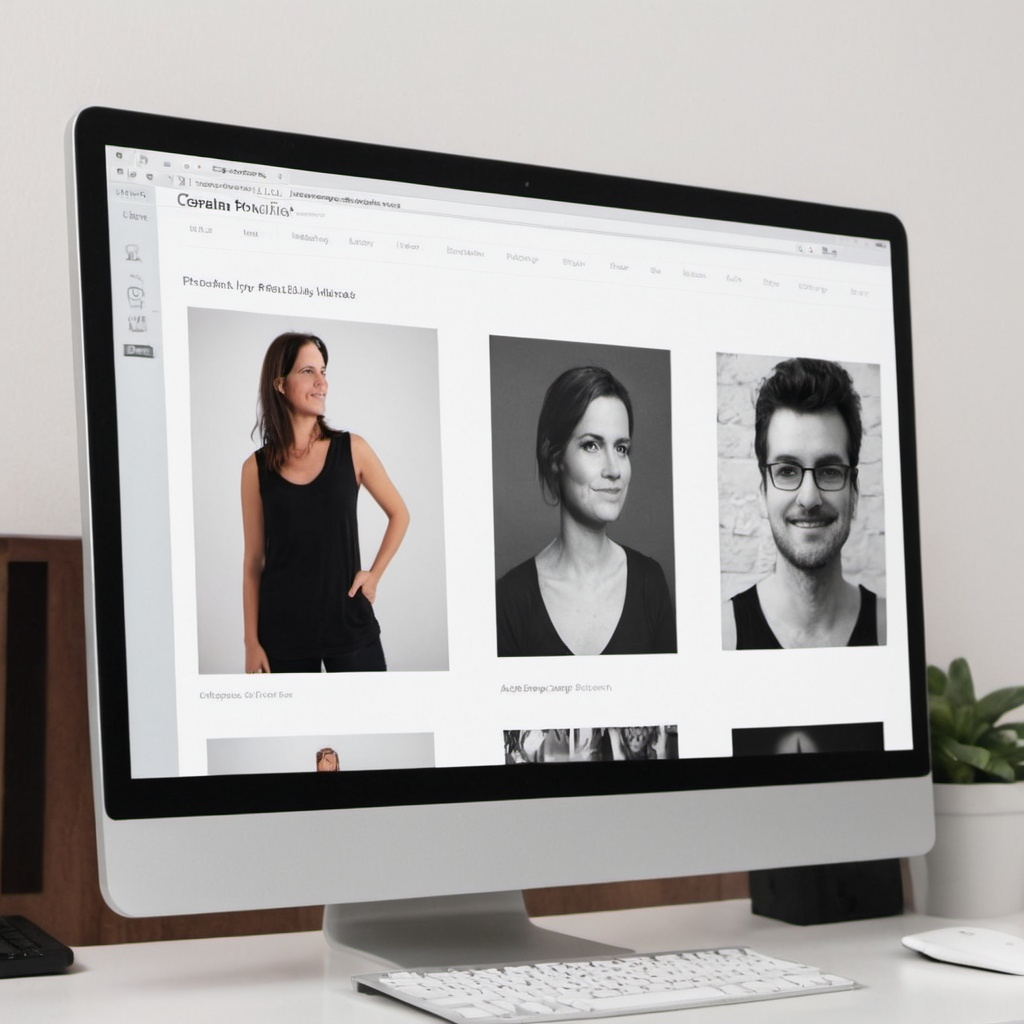In today’s digital age, an online portfolio is an essential tool for showcasing your skills, achievements, and work samples to potential employers, clients, or collaborators. Whether you’re a graphic designer, writer, developer, or any other professional, a well-crafted online portfolio can make a significant impact. Here’s a guide on how to create an effective online portfolio that highlights your work and helps you stand out.
1. Define Your Goals and Audience
Clarify Your Objectives
What It Is: Understanding your goals and target audience will guide the design and content of your portfolio.
How to Do It:
- Identify Purpose: Determine whether your portfolio is for job applications, freelance work, or personal branding.
- Know Your Audience: Consider what potential employers or clients will be looking for and tailor your content to meet their needs.
Example: If you’re a graphic designer looking for freelance work, your portfolio should highlight your best design projects and demonstrate your creative range.
2. Choose the Right Platform
Select a Platform That Suits Your Needs
What It Is: The platform you choose will affect how your portfolio is displayed and accessed.
How to Do It:
- Website Builders: Use platforms like WordPress, Wix, or Squarespace for customizable and professional-looking portfolios.
- Portfolio-Specific Sites: Consider sites like Behance or Dribbble for creative fields, or GitHub for developers.
- Custom Websites: If you have web development skills, you might build a custom site to have full control over the design and functionality.
Example: A photographer might use Squarespace for its visually appealing templates, while a software developer might opt for GitHub to showcase code repositories.
3. Design for Usability and Aesthetics
Create a User-Friendly and Visually Appealing Portfolio
What It Is: Your portfolio should be easy to navigate and visually attractive, reflecting your personal style and professionalism.
How to Do It:
- Simple Navigation: Ensure your portfolio is easy to navigate with clear menus and links.
- Consistent Design: Use a cohesive color scheme, typography, and layout that aligns with your personal brand.
- Responsive Design: Make sure your portfolio looks good on various devices, including desktops, tablets, and smartphones.
Example: Use a clean layout with high-quality images and organized sections to highlight your work and achievements effectively.
4. Showcase Your Best Work
Highlight Quality Over Quantity
What It Is: Your portfolio should feature a selection of your best work that demonstrates your skills and achievements.
How to Do It:
- Select Projects: Choose a diverse range of projects that showcase your abilities and versatility.
- Provide Context: For each project, include descriptions, your role, and any notable outcomes or feedback.
- Update Regularly: Keep your portfolio current by regularly adding new work and removing outdated or less relevant pieces.
Example: A graphic designer might include case studies of branding projects, web designs, and illustrations, with detailed explanations of the design process and results.
5. Include Personal and Professional Information
Provide Relevant Background Information
What It Is: Include information about yourself and your background to give context to your work.
How to Do It:
- About Me: Write a brief bio that highlights your professional background, skills, and interests.
- Resume: Include a downloadable resume or a link to an online version.
- Contact Information: Provide clear contact details or a contact form to make it easy for visitors to reach out.
Example: Add a section with a professional headshot, a summary of your career journey, and links to your LinkedIn profile or other relevant social media.
6. Use High-Quality Visuals
Ensure Visual Appeal and Professionalism
What It Is: High-quality visuals enhance the presentation of your work and create a professional impression.
How to Do It:
- High-Resolution Images: Use high-resolution images or videos of your work to ensure clarity and detail.
- Professional Layout: Arrange visuals in an aesthetically pleasing manner, with appropriate spacing and alignment.
- Interactive Elements: Consider including interactive elements, such as clickable prototypes or demos, if relevant.
Example: A web designer might include screenshots of website designs with interactive elements that allow viewers to explore the functionality.
7. Incorporate Testimonials and Recommendations
Add Credibility and Endorsements
What It Is: Testimonials and recommendations from clients, colleagues, or supervisors add credibility to your portfolio.
How to Do It:
- Collect Feedback: Request testimonials from previous clients or employers that speak to your skills and work ethic.
- Display Prominently: Include testimonials on your portfolio, ideally in a dedicated section or alongside relevant projects.
Example: Add a section where clients describe their positive experiences working with you, or include LinkedIn recommendations.
8. Optimize for Search Engines
Enhance Visibility and Reach
What It Is: Search engine optimization (SEO) helps your portfolio appear in search engine results, increasing visibility.
How to Do It:
- Use Keywords: Incorporate relevant keywords related to your skills and industry throughout your portfolio content.
- Meta Descriptions: Write clear and concise meta descriptions for each page to improve search engine indexing.
- Alt Text: Include descriptive alt text for images to improve accessibility and SEO.
Example: A content writer might use keywords related to writing, editing, and content strategy to attract potential clients or employers searching for those skills.
9. Test and Review
Ensure Functionality and Accuracy
What It Is: Regular testing and review help ensure your portfolio functions correctly and presents accurate information.
How to Do It:
- Check Links: Test all links and interactive elements to ensure they work properly.
- Proofread Content: Review all text for spelling and grammatical errors.
- Seek Feedback: Ask colleagues or mentors to review your portfolio and provide feedback.
Example: Before launching your portfolio, test it on various devices and browsers to ensure compatibility and a seamless user experience.
Conclusion
Creating an online portfolio is a powerful way to showcase your work, demonstrate your skills, and attract potential employers or clients. By defining your goals, choosing the right platform, designing for usability, and including high-quality content, you can build a portfolio that effectively highlights your professional abilities. Regular updates, effective SEO practices, and thorough testing will further enhance your portfolio’s impact. With a well-crafted online portfolio, you’ll be well-positioned to advance your career and achieve your professional goals.

